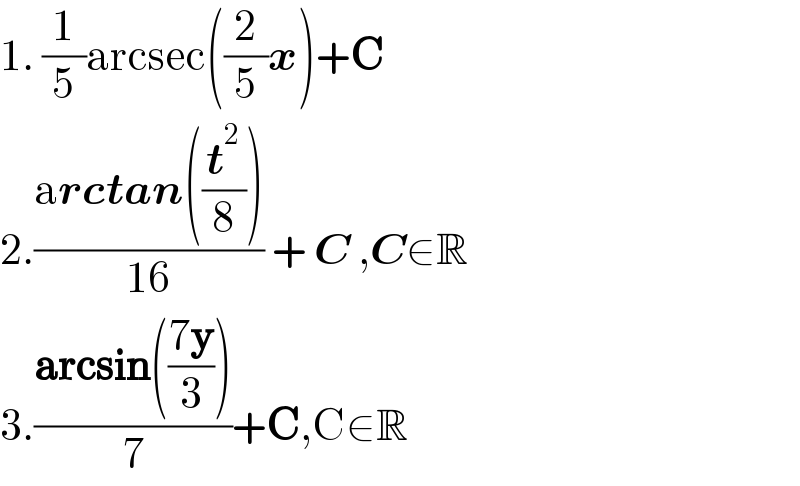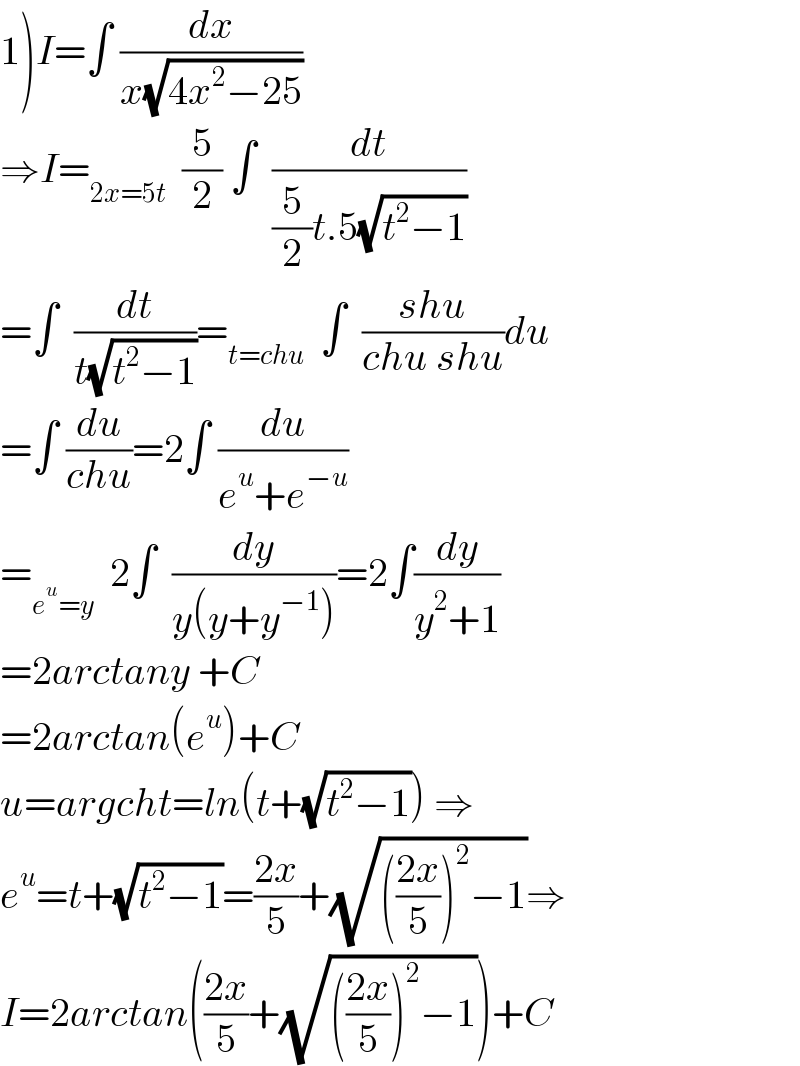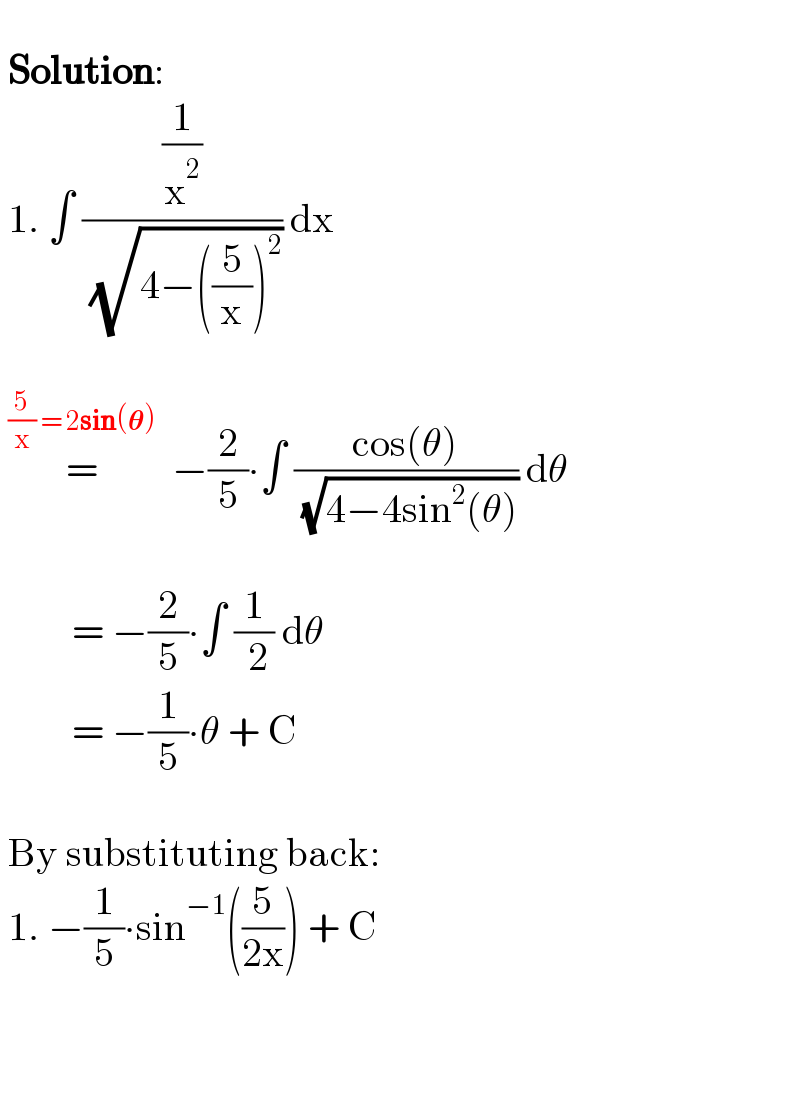
Question and Answers Forum
Question Number 164600 by mathlove last updated on 19/Jan/22

Answered by Zaynal last updated on 19/Jan/22

Answered by Mathspace last updated on 20/Jan/22

Answered by Eulerian last updated on 20/Jan/22

| ||
Question and Answers Forum | ||
Question Number 164600 by mathlove last updated on 19/Jan/22 | ||
 | ||
Answered by Zaynal last updated on 19/Jan/22 | ||
 | ||
| ||
Answered by Mathspace last updated on 20/Jan/22 | ||
 | ||
| ||
Answered by Eulerian last updated on 20/Jan/22 | ||
 | ||
| ||